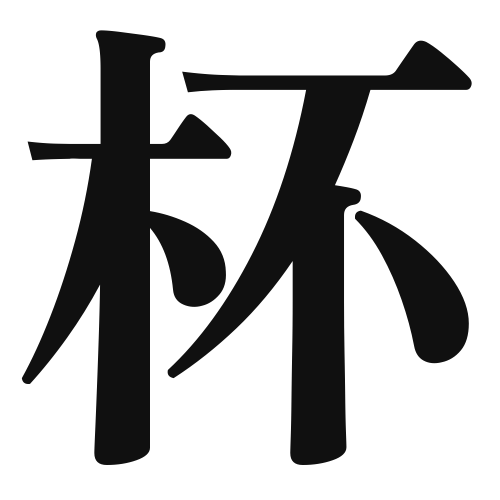1. Overview of Meaning
The kanji “杯” (pronounced “bai”) means “cup” or “bowl.” It is commonly used to refer to drinking vessels, especially in the context of serving beverages like sake or tea.
2. Formation and Radical
Formation of the Kanji: The kanji “杯” is a pictogram that represents a cup or a bowl. It visually resembles a cup with a handle, emphasizing its function as a drinking vessel.
Radical: The radical for “杯” is “木” (tree), which is often associated with wooden objects. This connection highlights the traditional use of wooden cups in Japanese culture.
3. Examples of Usage
Common Words and Phrases:
- 杯酒 (はいしゅ) – a cup of sake
- 一杯 (いっぱ) – one cup or one glass
Example Sentences in Daily Conversation:
- 「この杯はとても美しいです。」(This cup is very beautiful.)
- 「友達と一杯飲みに行きましょう。」(Let’s go for a drink with friends.)
4. Synonyms and Antonyms
Similar Kanji:
- 碗 (わん) – bowl; typically used for rice or soup, emphasizing a different shape and use.
- グラス (gurasu) – glass; a modern term borrowed from English, used for drinking vessels.
Antonyms:
- 空 (から) – empty; representing the absence of contents, contrasting with a filled cup.
5. Cultural and Historical Background
Connection to Japanese Culture: The use of “杯” is deeply rooted in Japanese traditions, especially in tea ceremonies and sake drinking rituals. It symbolizes hospitality and social bonding.
Proverbs and Idioms:
- 杯を交わす (はいをかわす) – to exchange cups; signifies friendship and camaraderie.
